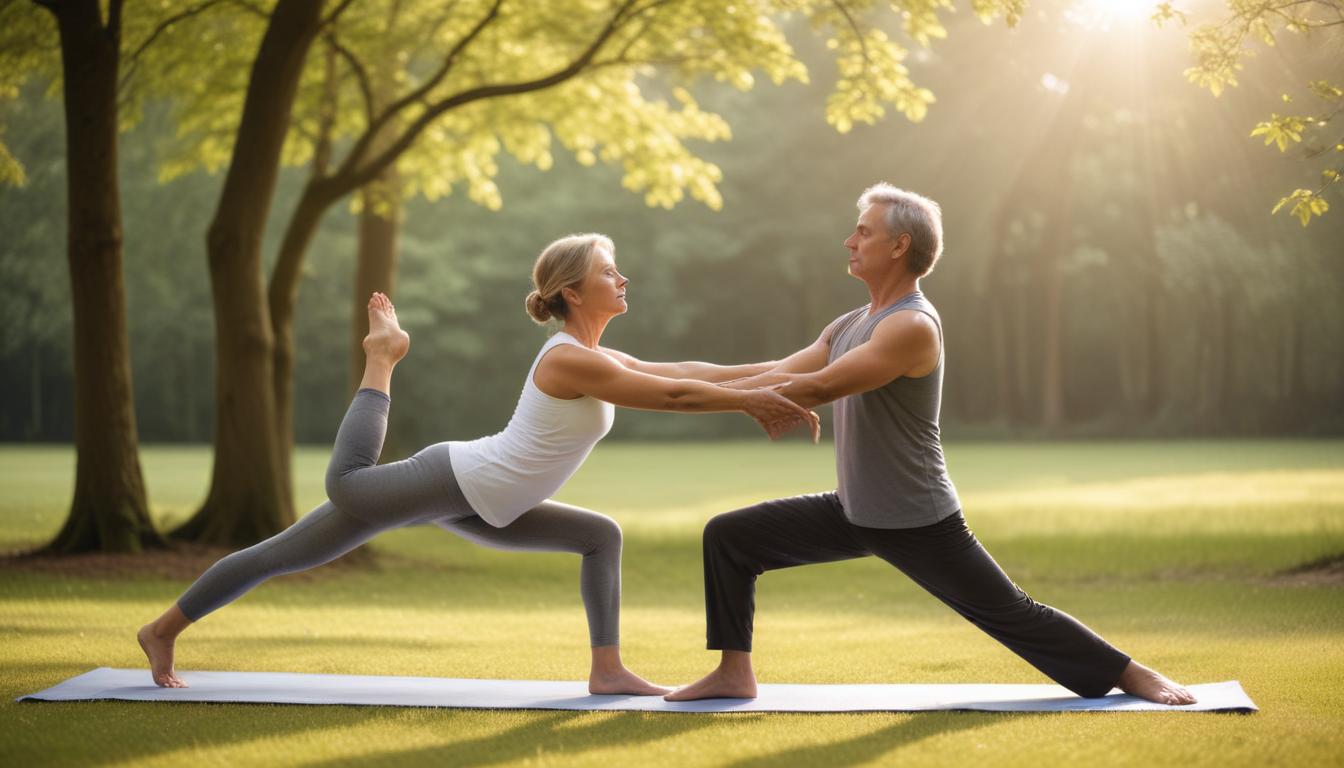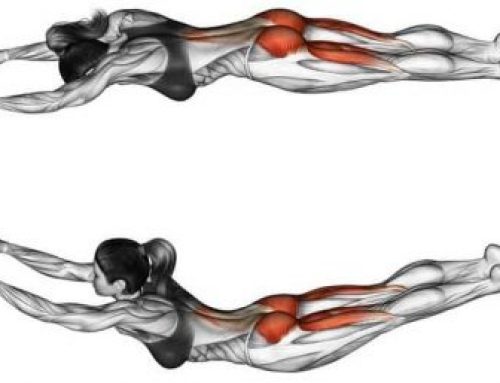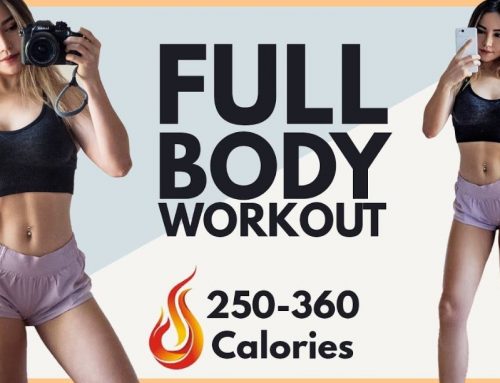
The Importance of Core Workouts for Overall Fitness: Best Exercises and Sample Routines for All Levels
“`html
Introduction to Core Workouts
Core workouts are an integral part of any fitness regimen, focusing on the muscles within the central part of the body. The core encompasses the abdominal muscles, lower back, hips, and pelvis. These muscles are fundamental to maintaining stability and balance, as they act as a stabilizing force for the entire body. Engaging in core workouts not only enhances these muscles but also supports the surrounding muscle groups, thereby contributing to overall physical fitness.
A robust core is essential for numerous reasons. Firstly, it significantly improves posture by aligning the spine correctly, reducing the strain on the back and neck. Good posture is a pivotal aspect of daily life and can prevent chronic pain and discomfort. Moreover, a strong core is instrumental in enhancing balance and stability. Whether it’s walking, running, or performing complex movements in sports, a stabilized core ensures better control and coordination.
Furthermore, core strength is a critical factor in injury prevention. By reinforcing the abdominal and lower back muscles, core workouts provide a protective layer, reducing the likelihood of strains and injuries, particularly in the lower back region. This aspect is particularly vital for individuals who engage in heavy lifting or high-impact sports.
In essence, core workouts lay the foundation for a fitter, more resilient body. They are not confined to a specific group but are beneficial for people of all fitness levels, from beginners to advanced athletes. As we delve deeper into this blog post, we will explore a variety of exercises and routines tailored to different fitness levels, all designed to strengthen the core and enhance overall fitness.
“`html
Anatomy of the Core
The core is a complex network of muscles that play a pivotal role in maintaining the body’s stability and overall functionality. At the forefront of these muscles is the rectus abdominis, commonly referred to as the “abs.” This muscle group runs vertically along the front of the abdomen, and is primarily responsible for flexing the spine and enabling forward bending motions.
Flanking the rectus abdominis are the obliques, which are divided into internal and external obliques. These muscles are located on the sides of the abdomen and are essential for trunk rotation and lateral flexion. They work synergistically with the rectus abdominis to enhance core stability and facilitate complex movements, such as twisting and bending sideways.
Another critical muscle group within the core is the transverse abdominis. Positioned deep within the abdomen, this muscle acts like a corset, providing support to the spine and internal organs. It plays a crucial role in maintaining intra-abdominal pressure, which is essential for activities that require lifting and stabilizing the torso.
Equally important are the muscles of the lower back and pelvis, including the erector spinae and the multifidus. These muscles extend along the spine and are vital for maintaining an upright posture, supporting spinal alignment, and allowing for back extension. The pelvic floor muscles also contribute significantly to core stability, aiding in the control of movements and the support of the pelvic organs.
Together, these core muscles work in harmony to support the spine and facilitate a wide range of movements, both in daily activities and athletic performance. A strong core enhances balance, stability, and power, contributing to better posture and reducing the risk of injuries. Whether performing routine tasks or engaging in high-intensity sports, the importance of a well-conditioned core cannot be overstated.
Benefits of a Strong Core
Having a strong core is fundamental to overall fitness and offers a multitude of benefits that extend beyond mere aesthetics. Core strength plays a crucial role in enhancing athletic performance. By stabilizing the spine and pelvis, a robust core enables athletes to generate more power during physical activities, improving their efficiency and reducing the risk of injury. This is particularly important in sports that demand quick changes in direction, explosive movements, or sustained endurance.
In addition to athletic performance, a strong core supports functional movements integral to everyday life. From lifting groceries to bending down to tie your shoes, core muscles are engaged in almost all daily tasks. A well-conditioned core ensures these movements are performed with greater ease and less strain, thereby improving overall physical health and quality of life.
One of the most significant advantages of core strength is improved posture. A strong core helps maintain the natural curvature of the spine, reducing the tendency to slouch and promoting an upright stance. This not only enhances one’s appearance but also alleviates stress on the spine, shoulders, and neck, mitigating the likelihood of discomfort and injury.
Better balance and stability are other key benefits of a strong core. Core muscles work in concert with the lower body to stabilize the entire frame, which is essential for activities that require coordination and precision. Enhanced stability can prevent falls and injuries, especially in older adults, and is beneficial for maintaining an active lifestyle.
Moreover, a strong core significantly reduces the risk of back pain. The core muscles support the spine, and when they are weak, other muscles must compensate, often leading to strain and discomfort. Strengthening the core alleviates this pressure, providing better support for the lower back and reducing pain.
Ultimately, the benefits of a strong core are extensive, contributing to both athletic prowess and everyday functionality. From improved posture and balance to reduced back pain and enhanced physical performance, core strength serves as the foundation for a healthier, more active life.
Best Core Exercises for Stability and Strength
Building stability and strength in the core is essential for overall fitness, as it supports proper posture, enhances athletic performance, and reduces the risk of injury. A well-rounded core workout should include a variety of exercises that target different muscle groups within the core. Here are some of the best core exercises designed to build stability and strength, along with detailed descriptions on how to perform them correctly.
Planks
Planks are a fundamental core exercise that activate multiple muscle groups, including the abdominals, obliques, lower back, and shoulders. To perform a plank, start by lying face down on the floor. Lift your body onto your forearms and toes, ensuring that your elbows are aligned directly beneath your shoulders. Maintain a straight line from your head to your heels, engaging your core muscles to prevent your hips from sagging. Hold this position for as long as possible while maintaining proper form.
Russian Twists
Russian twists are effective for targeting the oblique muscles. Begin by sitting on the floor with your knees bent and feet flat. Lean back slightly to balance on your sit bones, lifting your feet off the ground. Hold a weight or medicine ball with both hands, and twist your torso to the right, bringing the weight beside your hip. Return to the center and twist to the left. Continue alternating sides, keeping your core engaged and your movements controlled.
Bicycle Crunches
Bicycle crunches are excellent for working the rectus abdominis and obliques. Lie flat on your back with your hands behind your head and your legs lifted, knees bent at a 90-degree angle. Bring your right elbow towards your left knee while extending your right leg. Then switch sides, bringing your left elbow to your right knee while extending your left leg. Continue alternating sides in a pedaling motion, ensuring that your shoulders lift off the ground with each twist.
Leg Raises
Leg raises primarily target the lower abdominal muscles. Start by lying flat on your back with your legs extended and your hands placed under your hips for support. Keeping your legs straight, lift them towards the ceiling until they form a 90-degree angle with your torso. Slowly lower your legs back down to the starting position without letting them touch the floor. Repeat this motion, maintaining control and engaging your core throughout the exercise.
Mountain Climbers
Mountain climbers are a dynamic exercise that engages the entire core, as well as the shoulders and legs. Begin in a high plank position with your hands directly under your shoulders and your body forming a straight line from head to heels. Quickly bring your right knee towards your chest, then switch legs, bringing your left knee towards your chest while extending your right leg back. Continue alternating legs at a rapid pace, keeping your core tight and your movements fluid.
Sample Core Routines for Beginners
Embarking on a fitness journey can be daunting, especially when it comes to core workouts. For beginners, it is essential to start with a routine that is both manageable and effective. Below is a sample core workout routine tailored specifically for those new to fitness. This routine focuses on building foundational strength, enhancing stability, and improving overall core endurance.
1. Plank
Begin by positioning yourself in a forearm plank. Ensure your body forms a straight line from shoulders to ankles. Hold this position for 20-30 seconds. As you gain strength, gradually increase the duration to 60 seconds. Perform 3 sets with a 30-second rest period between each set.
2. Bird-Dog
Start on all fours with your hands directly under your shoulders and knees under your hips. Extend your right arm forward and left leg back, maintaining a straight line from your hand to your foot. Hold for 2-3 seconds before returning to the starting position. Repeat on the opposite side. Perform 10 repetitions on each side for 3 sets, resting for 30 seconds between sets.
3. Glute Bridge
Lie on your back with your knees bent and feet flat on the floor, hip-width apart. Lift your hips toward the ceiling, squeezing your glutes at the top. Hold for 2 seconds before lowering your hips back to the starting position. Complete 15 repetitions for 3 sets with a 30-second rest period between sets.
4. Dead Bug
Lie on your back with your arms extended toward the ceiling and knees bent at a 90-degree angle. Slowly lower your right arm and left leg toward the floor, keeping your lower back pressed into the ground. Return to the starting position and repeat on the opposite side. Perform 10 repetitions on each side for 3 sets, resting for 30 seconds between sets.
It is crucial for beginners to start slowly and focus on proper form rather than intensity. As your core strength improves, you can gradually increase the number of repetitions, sets, and the duration of each exercise. Remember, consistency and patience are key to achieving optimal results in your core workout journey.
Intermediate Core Routines
Transitioning to an intermediate core workout routine is essential for those who have established a foundational strength and are ready to challenge their core muscles further. This routine is designed to offer a moderate challenge and help you progress effectively. Below is a structured workout plan featuring exercises that target different areas of the core, ensuring balanced development.
Sample Intermediate Core Workout Routine
1. Plank with Shoulder Tap: Begin in a plank position, ensuring your body forms a straight line from shoulders to heels. Tap your left shoulder with your right hand and then your right shoulder with your left hand. Perform 3 sets of 15 taps per side, with 30 seconds rest between sets.
2. Russian Twists: Sit on the floor with your knees bent and feet flat. Lean back slightly, keeping your back straight. Hold a weight or medicine ball with both hands and twist your torso to the left, then to the right. Perform 3 sets of 20 twists (10 per side), with 30 seconds rest between sets.
3. Bicycle Crunches: Lie on your back with hands behind your head. Lift your legs to a tabletop position. Bring your right elbow towards your left knee while extending your right leg, then switch sides. Perform 3 sets of 20 repetitions (10 per side), with 30 seconds rest between sets.
4. Leg Raises: Lie on your back with your legs straight. Place your hands under your glutes for support. Lift your legs towards the ceiling, then lower them slowly without touching the ground. Perform 3 sets of 15 repetitions, with 30 seconds rest between sets.
5. Side Plank: Lie on your side and prop yourself up on your elbow, keeping your body in a straight line. Hold for 30 seconds on each side. Perform 3 sets per side, with 30 seconds rest between sets.
Maintaining proper form and technique is crucial to avoid injury and maximize the effectiveness of your core workouts. Focus on engaging your core throughout each exercise, and remember to breathe steadily. This intermediate routine builds on the strength you’ve developed, preparing you for more advanced exercises in the future.
Advanced Core Routines
For advanced fitness enthusiasts, core workouts need to be more challenging to continue building strength and stability. This sample routine is designed to push the limits of your core muscles through complex exercises and combinations. Ensure you perform each exercise with proper form to maximize benefits and minimize the risk of injury.
1. Dragon Flags
– Sets: 3
– Repetitions: 5-8
– Rest Period: 60 seconds
Begin by lying on a bench or mat, gripping a sturdy overhead structure. Raise your legs and hips off the ground, keeping your body in a straight line. Lower yourself slowly, maintaining control. This exercise targets the entire core, especially the rectus abdominis and hip flexors.
2. Hanging Leg Raises
– Sets: 3
– Repetitions: 10-12
– Rest Period: 60 seconds
Hang from a pull-up bar with an overhand grip. Keeping your legs straight, raise them to a 90-degree angle with your torso. Lower them back down slowly. This movement intensely engages the lower abs and hip flexors.
3. Ab Wheel Rollouts
– Sets: 3
– Repetitions: 10-15
– Rest Period: 60 seconds
Kneel on the floor with an ab wheel in your hands. Roll the wheel forward, extending your body into a plank position. Use your core to pull the wheel back to the starting position. This exercise significantly strengthens the rectus abdominis and deep core muscles.
4. Plank with Arm/Leg Lift
– Sets: 3
– Duration: 45-60 seconds
– Rest Period: 60 seconds
Assume a plank position. Lift your right arm and left leg simultaneously, hold for a few seconds, then lower them back. Repeat with the opposite limbs. This exercise challenges your core stability and coordination.
5. L-Sit
– Sets: 3
– Duration: 20-30 seconds
– Rest Period: 60 seconds
Sit on the floor with your legs extended in front of you. Place your hands on the ground beside your hips. Lift your entire body off the ground, forming an “L” shape with your legs. This isometric hold targets the lower abs and hip flexors.
Advanced core routines are essential for those who have progressed beyond basic and intermediate exercises. By consistently challenging your core with these advanced movements, you can achieve greater strength, stability, and overall fitness.
Tips for Incorporating Core Workouts into Your Fitness Regimen
Integrating core workouts into your regular fitness routine is essential for achieving overall strength and stability. To maximize the benefits of core exercises, it is important to follow a structured approach. Here are some practical tips to help you effectively incorporate core workouts into your regimen:
Frequency of Training: It is recommended to train your core muscles two to three times per week. This frequency ensures that you are providing enough stimulus for muscle growth and strength development without overtraining. Incorporating core exercises into your workout schedule on non-consecutive days allows for adequate recovery.
Importance of Recovery: Allowing time for recovery is crucial for muscle development and injury prevention. Core muscles, like any other muscle group, need time to repair and grow stronger after a workout. Ensure that you give your core muscles at least 48 hours of rest between intense sessions.
Combining Core Exercises with Other Forms of Training: Core workouts can be seamlessly integrated with other forms of training such as strength training, cardiovascular exercise, and flexibility routines. For instance, you can perform core exercises as part of your warm-up or cool-down, or incorporate them into circuit training. This approach helps maintain a balanced and comprehensive fitness routine.
Tracking Progress: Monitoring your progress is essential to ensure that you are making gains in core strength. Keep a workout journal or use a fitness app to record the exercises performed, the number of repetitions, and the intensity of each session. Regularly assess your performance and adjust your routine as needed to challenge your muscles and avoid plateaus.
Adjusting Routines: As you become stronger, it is important to progressively increase the difficulty of your core workouts. This can be achieved by incorporating more challenging exercises, increasing the number of repetitions, or adding resistance. Continuously adjusting your routine helps promote continuous improvement and prevents stagnation.
By following these tips, you can effectively integrate core workouts into your fitness regimen, enhancing your overall strength and stability while promoting a balanced and healthy lifestyle.
About the author : Tricep
We valued your need and thought . Main aim is to keep you fit with our suggestion and help let have a lifestyle
Latest videos
The Vital Role of Exercise in Maintaining Our Health
Understanding Exercise and Its Impact on HealthExercise is a cornerstone of a healthy lifestyle, often regarded as a vital factor in promoting overall health and well-being. Engaging in regular physical activity not only enriches the [...]
The Role of Triceps in Bench Press: Maximize Your Gains
```html Understanding the Bench Press and Its Muscle Groups The bench press is a compound exercise, revered in the strength training community for its ability to enhance upper body power and muscle development. At its [...]
Join our mailing list today
Insider offers & flash sales in your inbox every week.
Curabitur non nulla sit amet nisl tempus convallis quis ac lectus dolor sit amet, consectetur adipiscing elit sed porttitor lectus.











